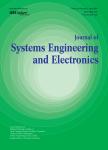版权所有:内蒙古大学图书馆 技术提供:维普资讯• 智图
内蒙古自治区呼和浩特市赛罕区大学西街235号 邮编: 010021

作者机构:School of AutomationBeijing Institute of TechnologyBeijing 100081China State Key Laboratory of Intelligent Control and Decision of Complex SystemsBeijing 100081China
出 版 物:《Journal of Systems Engineering and Electronics》 (系统工程与电子技术(英文版))
年 卷 期:2024年第35卷第2期
页 面:361-373页
核心收录:
学科分类:11[军事学] 12[管理学] 1201[管理学-管理科学与工程(可授管理学、工学学位)] 081104[工学-模式识别与智能系统] 082601[工学-武器系统与运用工程] 08[工学] 0826[工学-兵器科学与技术] 0835[工学-软件工程] 1109[军事学-军事装备学] 0811[工学-控制科学与工程] 0812[工学-计算机科学与技术(可授工学、理学学位)]
基 金:supported by the National Natural Science Foundation of China (62022015 62088101) Shanghai Municipal Science and Technology Major Project (2021SHZDZX0100) Shanghai Municip al Commission of Science and Technology Project (19511132101)
主 题:target threat assessment gated recurrent unit(GRU) self-attention(SA) fractional Fourier transform(FRFT)
摘 要:Aerial threat assessment is a crucial link in modern air combat, whose result counts a great deal for commanders to make decisions. With the consideration that the existing threat assessment methods have difficulties in dealing with high dimensional time series target data, a threat assessment method based on self-attention mechanism and gated recurrent unit(SAGRU) is proposed. Firstly, a threat feature system including air combat situations and capability features is established. Moreover, a data augmentation process based on fractional Fourier transform(FRFT) is applied to extract more valuable information from time series situation features. Furthermore, aiming to capture key characteristics of battlefield evolution, a bidirectional GRU and SA mechanisms are designed for enhanced ***, after the concatenation of the processed air combat situation and capability features, the target threat level will be predicted by fully connected neural layers and the softmax classifier. Finally, in order to validate this model, an air combat dataset generated by a combat simulation system is introduced for model training and testing. The comparison experiments show the proposed model has structural rationality and can perform threat assessment faster and more accurately than the other existing models based on deep learning.